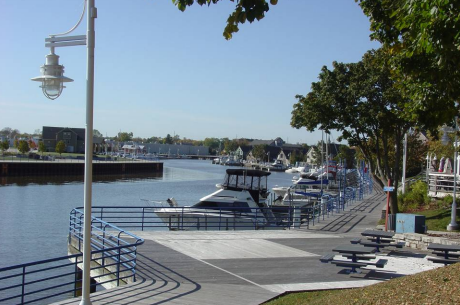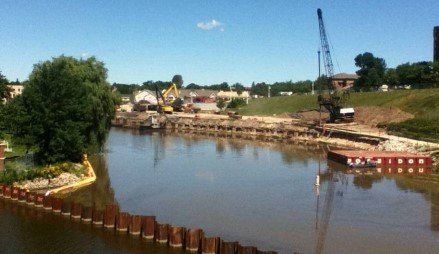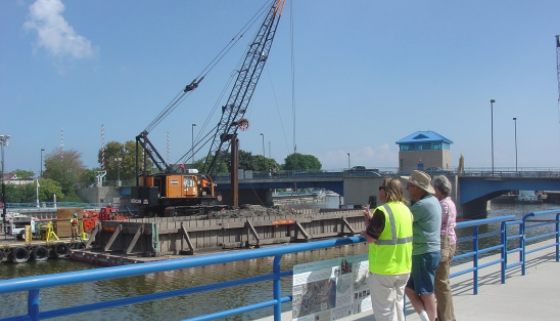Sheboygan River Project Highlights
The cleanup continues on the Sheboygan River and Harbor, highlighted by projects listed below.
On this page:
- Sheboygan Harbor Navigational Dredging
- Camp Marina Superfund Alternative Site
- Sheboygan River & Harbor Superfund Remediation
- Sheboygan River Great Lakes Legacy Act Project
- Habitat Restoration Projects
Sheboygan Harbor Navigational Dredging
Completed in 2012, this project was designed to address contaminated sediments in priority navigational areas. With design and oversight from the U.S. Army Corps of Engineers (USACE) and funding through the Great Lakes Restoration Initiative (GLRI), USACE removed approx. 170,000 cubic yards of sediment from the navigation channel.
Camp Marina Superfund Alternative Site
Under the Superfund Alternative Site Program, Wisconsin Public Service Corporation (responsible entity) removed approx. 25,000 cubic yards of sediments contaminated with PAHs and NAPL from the Sheboygan River. The project was completed in 2011.
Sheboygan River & Harbor Superfund Remediation
From 2006-2007 and again in 2011-2012, this Superfund project removed a total of around 84,000 cubic yards of PCB-contaminated sediments from the Upper and Lower River portions of the site. The project was conducted by Tecumseh Corporation and Pollution Risk Services.
Sheboygan River Great Lakes Legacy Act Project
Designed to further address additional sediments contaminated with PCBs and PAHs near/within the Superfund Alternative Site project, this Great Lakes Legacy Act project removed an additional 150,000 cubic yards of TSCA & non-TSCA contaminated sediments from the Sheboygan River. The project partners included the Wisconsin Department of Natural Resources, the City of Sheboygan, Sheboygan County, Wisconsin Public Service Corporation, and Pollution Risk Services.
Habitat Restoration Projects
In 2012, six habitat restoration projects were completed in order to restore riparian & wetland habitats along the lower Sheboygan River. This was achieved through:
- stabilizing and sculpting eroded shorelines,
- invasive species removal combined with native plantings,
- in-stream habitat improvements, and
- the installation of nest boxes and platforms to enhance habitat for birds and bats.
In total, approx. 72 acres of habitat were either enhanced or restored. Combined funding amounted to approx. $4.25 million and was made possible through a grant funded by the GLRI.
">





